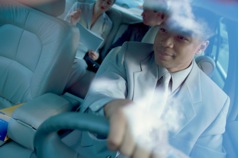Transportation network companies, also known as TNCs or ride-sharing companies, are popping up in more cities across the U.S. With names like Uber, Lyft, and Sidecar, these entities allow a person to set up and pay for a ride using a smartphone app or computer. But TNCs don’t maintain their own fleets of cars; instead, they allow regular drivers to “rent” out their personal vehicles to those who want to earn more as ride-sharing drivers.
It’s this latter aspect which is drawing the ire of some people in the insurance business. They claim that ride-sharing services are effectively driving up the rates of personal auto insurance policies for all other drivers in the areas in which they operate.
Claim: Everyone Pays More Because of Ride-Sharing Drivers
Last month, the Association of California Insurance Companies issued a statement concerning what it claims will be an increase in auto policy premiums due to TNCs. The ACIC alleges that the method by which ride-sharing companies insure their drivers has a negative effect on the entire pool of drivers in its region. ACIC vice president Armand Feliciano said, “The TNC model shifts the risk and cost to their drivers and all other California drivers by putting the risk on all personal auto insurance policies. The TNCs are trying to force a square peg into a round hole, and it does not fit because TNC drivers present a higher risk than personal drivers.”
This announcement comes less than three months after a high-profile accident involving a TNC driver. On New Year’s Eve, a driver for Uber X was between rides in San Francisco when he struck a family in a crosswalk and killed a young girl. At the time, there was a question as to whether the Uber X driver was insured by the TNC, since he was not carrying a passenger at the time of the accident. This is important, because almost no personal lines carriers will cover vehicles when they are used for hire.
But are the claims made by ACIC accurate?
Are Ride-Sharing Drivers Really More Dangerous?
There is some truth to the idea of spreading the TNC drivers’ risk among the general population. That’s how most auto insurers determine how much to charge a given driver for a policy. These insurers assess the overall risk of drivers in certain geographic areas, age groups, levels of driving experience, etc. and charge a premium based on how likely these drivers are to file an insurance claim. So it would follow that if TNC drivers were a higher risk classification, then some of that risk would filter over into all of the drivers in the same geographic area.
However, there’s no evidence to indicate that ride-sharing drivers are any less or more dangerous than any other driver. While there have been some anecdotes in the media about collisions involving TNC drivers, no research has been conducted specifically to determine how safe or unsafe ride-sharing drivers are. In fact, an argument could be made that these TNC drivers are actually less of a risk than the typical driver simply because they spend more time behind the wheel in different parts of a city (and practice makes perfect). This is one reason why truckers tend to be safer drivers than those of passenger vehicles.
You Can Lower Your Auto Insurance Rates
The bottom line? It’s too early to tell whether the ACIC claims are true. But if you are a driver who is concerned about your auto insurance premiums going up due to ride-sharing companies or any other reason, you should consider shopping around for a lower rate. Auto Insurance Specialists have been saving drivers money on their premiums for over four decades. So if you think you’re paying too much for your coverage, visit the AIS website today to get multiple quotes on other auto insurance policies.
Written by Chris Martin
The information in this article was obtained from various sources. This content is offered for educational purposes only and does not represent contractual agreements, nor is it intended to replace manuals or instructions provided by the manufacturer or the advice of a qualified professional. The definitions, terms and coverage in a given policy may be different than those suggested here and such policy will be governed by the language contained therein. No warranty or appropriateness for a specific purpose is expressed or implied.




